Table of Contents
Abstract
We know Jesus as a God who laid the foundation of Christianity. I guess most of us know only that much about him. For the past couple of days, I have been thinking about Jesus’ Crucifixion. How and why was Jesus crucified? What was its purpose?
Therefore, in this post, I will try to bring out some incidents around Jesus’ life, his crucifixion, and his resurrection. We will also briefly talk about the gospels and the two testaments i.e. New Testament and Old Testament.
Please note, all the data, part of this article, is based on my research. If you find any facts wrong, or you want to share anything relating to this topic, feel free to highlight and drop your thoughts in the comments section at the end of this post.
When was Jesus born?
Jesus was supposedly born between 6 BC – 4 BC in Bethlehem (currently, a city in the disputed West Bank region of Palestine/Israel). He was the son of Joseph (who was a carpenter) and Mary who was engaged to Joseph. The incident of birth of Jesus can be found in Luke 2:1.
In the current terminology, the year Jesus was born in AD 1, but some historians still believe that he was born between 6 BC – 4 BC.
As per the Gospels, Joseph and Mary had to go to Bethlehem from their home in Nazareth to register for the census that was ordered by the Roman Empire.
With the power of the Holy Spirit, Mary gave birth to Jesus in Bethlehem even when she was a virgin. That is why we refer to her as the Virgin Mary. Mary gave birth to Jesus in a stable as the place where they were expected to stay in Bethlehem was full.
It is said that an angel appeared and told the shepherds (who were keeping watch on their cattle around the fields in Bethlehem) that the Savior, the Messiah (as per the Old Testament) is born.
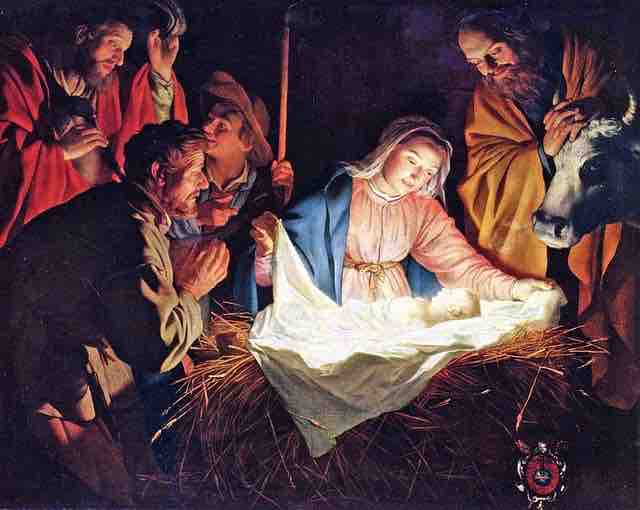
Image by user:janeb13 from Pixabay
What is the Old and the New Testament?
The Holy Bible is not just a single book but is a collection of many books with stories, sacrifices, incidents, poems, etc. It has 2 sections i.e. Old Testament and New Testament which are described below.
Old Testament
Old Testament (OT) forms the first section of the Holy Bible and is also referred to as the Hebrew Bible on its own. The Old Testament relates to the writings by the Hebrew Jewish community between the twelfth century B.C. and the start of the Christian Era. From the creation of Earth to the exodus of Israelites, it covers everything. It contains 39 books about the history and the religion of the people of Israel. The stories, the laws, the religious practices, etc. are all defined in the OT. In short, the Old Testament is the base of Judaism and Christianity. Old Testament promised the arrival of a Messiah who will save Jews from their sins.
The Quran calls the Old Testament the Tawrat. The Old testament was written before Jesus was born and so is relevant to the times before him.
It is said that Moses was the sole author of the Old Testament. But, at many other places, it is said that Moses was the co-author and with other scribes created OT.
New Testament
New Testament (NT) forms the second part of the Holy Bible and is specifically related to Christianity. It is focused on Messiah (Jesus) as promised in the Old Testament and his actions.
It should be noted that the early Christians still had to follow the Old Testament which was of course focused on Judaism. The New Testament came into existence after almost a couple of decades from the Crucifixion. The Gospels were not part of the testament until later of the 80s-90s AD. So, the New Testament completed somewhere between 50 AD-100 AD. The stories of Jesus, his preaching, supposedly were circulated out orally in the initial few decades after Jesus’ Crucifixion. NT is a collection of 27 books.
The New Testament comprises of Gospels (Matthew, Mark, Luke, and John) that tell the stories of Jesus, and answer the questions like How he was born? How he delivered his preaching? How he became a Messiah that OT promised? etc.
NT also consists of Epistles written to provide guidance to church leaders for any new converts and how a convert can commit himself/herself to Jesus. New Testament ends with the book of Revelation.
Different names of Jesus
Jesus is a Greek form of Hebrew name Joshua and means the Savior. The one who rescues, delivers, or saves.
Jesus is known by many different names. Jesus Christ, Jesus of Nazareth, Jesus son of Joseph, and also Jesus of Galilee.
- As he was the son of Joseph, he was popularly known as Jesus son of Joseph during his life.
- “Christ” was not a part of Jesus’ name. It was rather a title given to him after his death. The term relates to the English word Messiah which is derived from the word “Mashiach” in Hebrew. Mashiach, as per the Old Testament, was expected to be the one appointed by God himself who would free Israelites / Jews from their sins and become their Supreme leader.
- Jesus was also known as Jesus of Nazareth or the Nazarene because he grew up in the town of Nazareth (though, he was born in Bethlehem). As per Matthew 2:23
and came and lived in a city
called Nazareth; that it might be
fulfilled which was spoken through the
prophets: “He will be called a Nazarene.”
- As Nazareth was part of Galilee province (currently in Northern Israel) where he spent most of his life, Jesus was also known as Jesus of Galilee.
Roman Empire & Jews
Jesus and Romans
The region (also called Jewish Palestine) where Jesus was born and grew up was under the control of the Roman Empire at that time. Different regions were ruled either by kings who were friends with the Romans or by the governor appointed by the Empire.
Tiberius Caesar Augustus was the ruler of the Roman Empire when Jesus became a preacher. When Jesus was born, Gaius Octavius (or Augustus Caesar) was the Roman emperor.
When Jesus was born, the region was under the control of king Herod the Great, an ally of the Romans. Herod died soon after Jesus was born and Jewish Palestine was divided among selected people to rule. The majority of the Jewish regions were given to Harod’s sons Archelaus and Antipas.
Antipas, continued to be the ruler of Galilee and Peraea, keeping the Roman emperor happy. Archelaus was removed by Octavius (Gaius Caesar), not satisfied with his governance.
Pontius Pilate was then appointed as the governor to overlook the regions (Judea, Samaria, and Idumaea). These regions were not directly looked after by Pilate. A High Priest and his council took care of the business on his behalf. During the time of Jesus, Caiaphas was the high priest.
Jews
Jews (people who followed Judaism) had only one temple (Temple of Jerusalem) in ancient Jerusalem which was destroyed in 586 BC by the King of Babylon. The entire structure of Judaism is based on Torah that consists of 5 books (First 5 of Old Testament) given to Moses by God himself.
There were three religious parties during that time that had their own interpretation of the Torah. These three parties were Pharisees, Essenes, and Sadducees. Most of the Jews still had one thing in mind – the Messiah. So, they were not inclined towards the governance of Romans, governors, or priests.
Jews had the idea that they need to obey God’s commands and spread his word among other people. Jews believed in monotheism (one God) and that the God of Israel is their only God.
Jesus at the age of twelve
As per Matthew, Joseph was a carpenter, and as per Mark 6:3 Jesus was referred to as a carpenter.
One of the key accounts in Luke’s Gospel (Luke 2:41-52) was an incident when Jesus was 12 years old. Jesus went to Jerusalem with Mary and Joseph with a group to be a part of the Festival of Passover. After the festival was over, the group headed back to Nazareth. Mary and Joseph thought that Jesus would be part of the group so we’re not worried. After a day’s journey, Mary and Joseph realized that Jesus was not with them.
Mary and Joseph went back to Jerusalem and three days later found Jesus in the Temple of Jerusalem. He was among the company of teachers and the elderly. He listened and sought answers to his questions. The teachers were amazed by his understanding.
John, the Baptist
There is a very little account of Jesus’ life in the Gospels between the age of 12 and 30. It is said that Jesus started as a preacher when he was around 30 years old.
Jesus was baptized in Jordan by John the Baptist (John 1: 19-25), who was supposedly a Prophet sent by God. In some accounts, it is said that John was the cousin of Jesus.
As per Mathew’s Gospel, it is said that John was amazed to know that Jesus wanted to be Baptized. John knew Jesus did not commit any sins and was the son of God. Replying to John, Jesus indicated that his going through baptism will be an example to all the people who would follow his preaching.
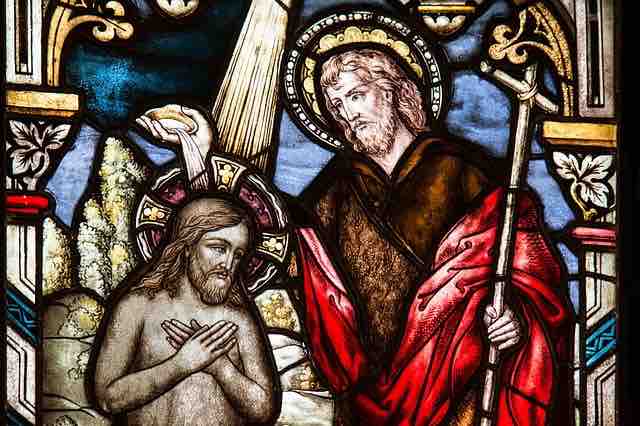
Image by Thomas B.(user:Didgeman) from Pixabay
Baptism is a religious ceremony in Christianity where a person is immersed in water or water is sprinkled on the forehead. Baptism indicates the purification of the soul, the start of the new life of righteousness, and oath to abide by the Christian Church.
Jesus as a Preacher and Healer
Shortly after the baptism, Jesus started his journey as a preacher. At the age of 30, he went to different villages preaching to the people the word of God. He told them to follow him if they want to follow the Supreme Leader i.e. God. But, Jesus’ popularity was not restricted to preaching. He went to different places and showed his capabilities like curing people suffering from a disease and even bringing some of them back to life.
He was thus proclaimed as a preacher of God’s word and a healer. Also, his following was not restricted to the elite class. He welcomed everyone from wealthy to poor, healthy to diseased, etc. Because of this diversity, he became popular among the people.
Marriage in Cana
The marriage in Cana (John 2:1-11) is a famous incident (considered to be the first) related to the display of Jesus’ power. As per the Gospel of John, it is said that Jesus, his mother, and his disciples were invited to a wedding in Cana. When the wine ran out, Jesus used his power to convert the water into wine thus saving the host from embarrassment.
Satan, the devil
Another account in Matthew (Matthew 4: 1-11) and Luke (Luke 4) is related to Satan, the devil. After the incident of Cana, Jesus supposedly went into the wilderness by the command of the Holy Spirit for forty days.
The Gospels state that Satan tried to make Jesus commit sin by tempting him to put his human desires before the purpose for which he was sent by God. Satan wanted Jesus to worship him instead of God. But, Jesus did not give in and was able to go through all that Satan had to offer.
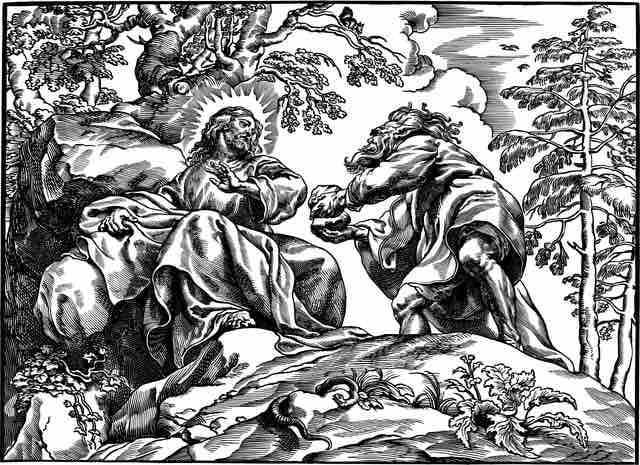
Image by Gordon Johnson (user:GDJ) from Pixabay
The Unrest
Jesus was slowly becoming popular among people. But, that was not a thing of concern for the High priest and Romans.
It was when he started pointing out the fallacies of the religious parties, their laws, traditions, rules, and unnecessary use of authority, that a sense of fear embraced the priests and the Romans.
As more and more people started following him, the Romans, their governors, and the priests felt threatened. An uprising could easily topple them. Jesus challenged the authorities with the message that the people bow to them only because they fear them. Once that fear fades, people will choose the right path.
Sabbath Day
Sabbath is a day of rest and worship for the Jewish. One of the incidents that showed Jesus directly challenging the authority was on a Sabbath Day or simply Sabbath.
As per the rules, on the Sabbath, a person cannot do any work, or walk a certain distance, or cannot carry an object with him/her. Jesus thought of these rules as more of a restriction rather than anything related to the purpose of Sabbath.
On one Sabbath (John 5:1-18), Jesus cured a disabled man and asked him to walk carrying his mat. The man was actually healed and walked as Jesus told him to do. But this did not go well with the religious parties esp. Pharisees. They confronted Jesus, but he told them that he was working and so was his father i.e. God.
The religious parties realized that not only Jesus was breaking the rules by healing people during the Sabbath but also was claiming to be the Son of God.
Him and the GOD
Jesus was open with the philosophy that to believe in him was to believe in God. The religious parties Pharisees and Sadducees felt threatened because of Jesus’ rising popularity and his preaching. They ultimately decided that in order to keep their authority over the people, they will have to get rid of Jesus.
Jesus knew about his Crucifixion
As per the gospels, Jesus knew that he would be crucified. He even told his disciples that such a day shall come where he will be arrested and crucified to death. He also marked the fact that he would be resurrected three days after his death.
But, why exactly Jesus allowed himself to get crucified?
Why God sent Jesus and why Jesus allowed his crucifixion?
Jesus was the savior sent by God himself for the salvation of the world. It is said that God created Jesus himself and was thus rightfully the Son of God. God sent him to teach his word to the people and relieve them from their sins.
God created humans out of his liking. But, over a period of time they started committing sins, and thus were no more suitable to be regarded as the Children of God. God wanted to purify and save humanity, but the price of sin was death. In order to free humans from their sins and save them, God sent his own son, Jesus. Jesus got crucified and sacrificed his life to pay the price of the sins committed by humanity. With his sacrifice, the humans were again regarded as the Children of God and were eligible to enter heaven.
In the Old Testament, it is highlighted that in order to seek God’s forgiveness, the Jews needed to sacrifice a lamb every year. So, a lamb was sacrificed for their sins. But, this process was far from over. It had to be done each year. Thus, God sent Jesus to accomplish the task of freeing humanity from all their sins once and for all. The sacrifice was important because if humanity would have been punished and erased, the humans would have never seen heaven nor would have found their Father, God.
Jesus was the lamb.
John the Baptist (John 1:29) even said – “Behold, the lamb of God who takes away the sins of the world.”
The Last Supper
The last supper is probably one of the popular events in Christianity. It was after the “last supper” that Jesus got arrested and was later crucified.
According to Luke 22:19, Jesus says while distribution the bread to his apostles, “This is my body given for you; do this in remembrance of me”
According to Luke 22:20, Jesus says while pouring wine, “This cup is the new covenant in my blood, which is poured out for you.”
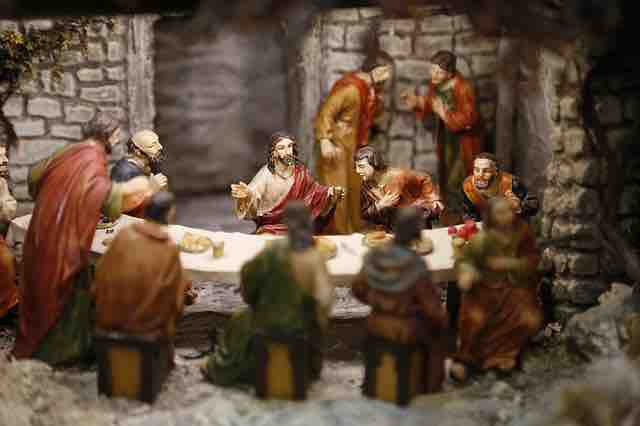
Image by (user:ErStePictures) from Pixabay
Judas’ Betrayal
Judas, a disciple of Jesus is considered to be the culprit who identified Jesus and got him arrested. Mathew 26:15 highlights that Judas did what he did for the money. Luke and John state that Judas was overpowered by Satan himself and thus he identified Jesus.
It is said that Judas identified Jesus by kissing him in the Garden of Gethsemane in Jerusalem. Jesus and his apostles had come to Jerusalem for Passover celebrations. Jesus knew what was about to happen and how an apostle would betray him. He was brought to Caiaphas after the arrest. The high priest asked Jesus if he was the son of God? Indeed, Jesus accepted.
As per Mark 14:62, Jesus answered, “I am, and you will see the Son of Man seated at the right hand of Power, and coming with the clouds of heaven.”
Considering an opportunity to remove Jesus, the high priest charged Jesus with blasphemy. The high priest and his council wanted Jesus to be crucified.
A point to note is that Jewish law did not allow the punishment of death. So, after the arrest, the religious parties took Jesus to Pontius Pilate and urged him to order Jesus’ execution. They specifically wanted Jesus to be crucified. It is said that Pilate never wanted Jesus to be executed, but he had to give up considering the majority of the voices wanted Jesus to be crucified.
The Execution
Jesus was crucified a day after he was arrested. He bled out.
Crucifixion was one of the most brutal forms of punishment during that time. Killing someone through Crucifixion meant that the accused would have done something extremely bad or heinous. They wanted to show the people and send a message that anybody following the same path as Jesus, will be crucified.
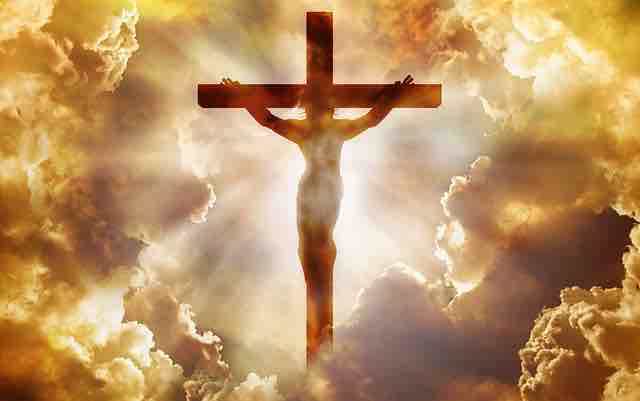
Image by Jeff Jacobs (user:jeffjacobs1990) from Pixabay
A wreath of thorns was made and pressed against Jesus’ forehead till the blood came out. Metal tipped whips were used on his body. Jesus was tied to the cross using large nails piercing his wrists and feet. The intention was to show the people that anyone going against the religious parties or Romans will have to go through the same death procedure.
Jesus was crucified with two other thieves. A spear was used to check if he was dead or not. Though Jesus did not have to go through all this as his power surpassed everything. He did it at God’s command.
As per John 10:18, Jesus said – “No man taketh it from Me, but I lay it down of Myself. I have power to lay it down, and I have power to take it again. This commandment have I received from My Father.”
As per Luke 24:7, Jesus told his disciples – “The Son of Man must be delivered over to the hands of sinners, be crucified and on the third day be raised again.”
According to the research, Jesus was crucified somewhere between AD 30 – AD 33.
The Resurrection
After Jesus was crucified and confirmed dead, his body (covered in linen clothing) was thrown in a tomb and the entrance was made inaccessible by placing a big stone. There are many different writings as part of Jesus’ resurrection.
Matthew
As per Matthew 28, two Mary’s (one was Mary Magdalene, a follower of Jesus) traveled to the tomb on the day of resurrection. There was a violent earthquake and an angel from heaven came down and removed the big stone in front of its entrance. Both were appalled to see this spectacle. They saw that the tomb was empty. The angel who was sitting on the big stone told them to not be afraid as Jesus has risen. He wanted this message to be sent to his disciples. Both women hurried back and apprised Christ’s disciples of what they saw. The next moment Jesus was greeting his disciples.
Mark
As per Mark 16, Mary Magdalene and Mary the mother of James and Salome traveled to the tomb on the day of resurrection to anoint Jesus. When they reached, they saw the big stone removed and the tomb was empty. As they entered the tomb, they saw an angel in white. The Angel told the women to not be afraid as Jesus has risen and asked them to tell this to his disciples. Both women hurried back and apprised Christ’s disciples of what they saw.
Luke
As per Luke 24, Mary Magdalene and another Mary traveled to the tomb on the day of resurrection to anoint Jesus. As they reached, the big stone was removed and the tomb was empty. When they tried to search his body in the tomb, 2 men appeared out of nowhere and asked the women if they are searching for Jesus. The men told the women that Jesus has risen and asked them to tell this to his disciples. He also reminded his words – “The Son of Man must be delivered over to the hands of sinners, be crucified and on the third day be raised again.”
John
As per John 20, Mary Magdalene went to the tomb on the day of resurrection and saw that the big stone has been removed from the entrance and there was also no sign of Jesus’ body. She went back and told this to other disciples who came running to the tomb. They also saw the same thing. There was no sign of the body and only the shreds of linen clothing that Jesus had worn floating around. The disciples were not able to make out what happened to Jesus’ body and so they returned.
Mary was still standing in front of the tomb and started crying because there was no trace of Jesus. She looked inside the tomb only to find two angels sitting where Jesus’ body was supposed to be. They inquired about why she was crying and she told them the reason. Suddenly, Jesus appeared from behind and asked her the same question. Mary initially thought the person was a Gardner. She asked him if he knew the location where Jesus’ body was taken?
Jesus said to her, “Do not cling to me, for I have not yet ascended to the Father; but go to my brothers and say to them, ‘I am ascending to my Father and your Father, to my God and your God.’”
These incidents indicated that Jesus was definitely not an ordinary human being. He was much more than that. He was the child of God, a messenger sent by the Supreme Being himself.
Jesus got arrested on Thursday, crucified the next day i.e. Friday (Good Friday), and got resurrected on the same Sunday (Easter).
Appendix
What is BC and AD in calendar dates?
Many of us still get confused when it comes to depicting and tagging dates in history as AD and BC. I thought squeezing this topic is important as most historians use these terminologies to specify a date in time. Let us dive a bit into these terms.
- AD – It stands for Anno Domini which is a Latin word meaning “in the year of our Lord”. AD should be used prior to the year (like AD 1).
- BC – It stands for Before Christ and thus refers to a date when Christ was not born. If AD 1 is the year in which Jesus was born, then 1 BC is the previous year to AD 1. BC should be used post the year (1 BC).
Over the years, terms like CE (Common Era) and BCE (Before Common Era) have come up. CE is the same as AD, and BC is the same as BCE.
Some interesting Facts:-
- Gautam Buddha, the founder of Buddhism died in 400 BCE i.e. 400 years before Jesus was born.
- AD 622 or 622 CE is said to be year 1 in Islamic Calendar when Prophet Muhammad migrated to Medina. Like AD, in the Islamic Calendar, AH (Anno Hegirae) is used.
- 3761 BCE was the year when the world was created as per Hebrew Calendar. So, if we are living in 2020, it is the year 5781 in the Hebrew Calendar.
What is the Passover Festival?
The term Passover festival has been used in this article a couple of times. Once, when Jesus was found in the Temple of Jerusalem at the age of twelve, and the other was when Jesus traveled with his apostles to Jerusalem and was later arrested and crucified due to Judas’ betrayal.
Passover festival is one of the major festivals for the Jews. The festival marks the exodus of Israelites from the slavery of Egypt leading back to their own land i.e. Israel. It is a weeklong celebration in Israel and many rituals are performed as part of the festival.
Why are the Gospels in New Testament named as Matthew, Mark, Luke and John?
Matthew was one of the twelve apostles of Christ. He was well educated and a Tax collector. He wrote about Jesus and how he was able to fulfill the prophecies of the Old Testament. It is stated that Matthew took notes while he was with Him and later converted them into a book.
Mark, also John Mark, interpreted and wrote the experiences and memories of Apostle Peter in his book with whom he traveled. His mother was a follower of Christ and so was he. It is thus obvious that living in such an environment, he would have known about Him. Mark’s book was aimed at the idea of Peter spreading Christ’s preaching to the people esp. Gentiles.
Luke, became a follower after Christ’s death. He got to know about Christ from Apostle Paul. Luke was a Physician and left his profession to learn more about Christ and his philosophies. Apart from the preaching of Christ, his book also contains incidents that he got to know by talking to the people who either interacted with Christ or were present when Christ delivered his preaching or performed miracles.
John was one of the twelve apostles of Christ. It is said that John’s book was created after all the other three gospels. It is suggested that John read the other three gospels before writing his own. He targeted those instances that were not covered by others (Matthew, Luke, and Mark). He also wrote about John, the Baptist. His book focussed on Jesus as a divine being and the Son of God.
Temple of Jerusalem and Who was High Priest?
The Temple of Jerusalem or Solomon’s Temple was the temple built in ancient Jerusalem. It was the temple for the Jews built under the reign of King Solomon (Son of David). The Temple was the hub for sacrifices, rituals, cultural gatherings, and intellectual conversations. The temple was destroyed in 586 BC by the King of Babylon – Nebuchadnezzar who enslaved the Jews.
In this post, we have seen how Jesus at the age of 12 was found inside the Temple of Jerusalem engaged in discussions with priests, elderly, and teachers.
High Priest (or Kohen Gadol in Hebrew) was the chief of all the priests in the Temple of Jerusalem. He only had access to the Inner Sanctum and took care of all administration of the Temple. He was also the religious and political head with the power of maintaining law and order.
Conclusion
Jesus being crucified sent a clear message to the people. He was the one who sacrificed himself for their sins. If wanted, he would have easily escaped death, but, he died because God himself told him to do so. Jesus getting crucified also depicts that God loves mankind and can do anything to keep them away from sins. Erasing (death for the sins) the whole of mankind would have caused the humans to never find heaven and thus he sent Jesus to take the burden of their sins. Every human is his child. He wants everyone to follow his path and live a pure life.
Also, check out our poem on Jesus’ Crucifixion.
Good Reads & References
CURATED & WRITTEN BY
AYUSH PANDYA
(AUTHOR – THE UNPRECEDENTED CULT)